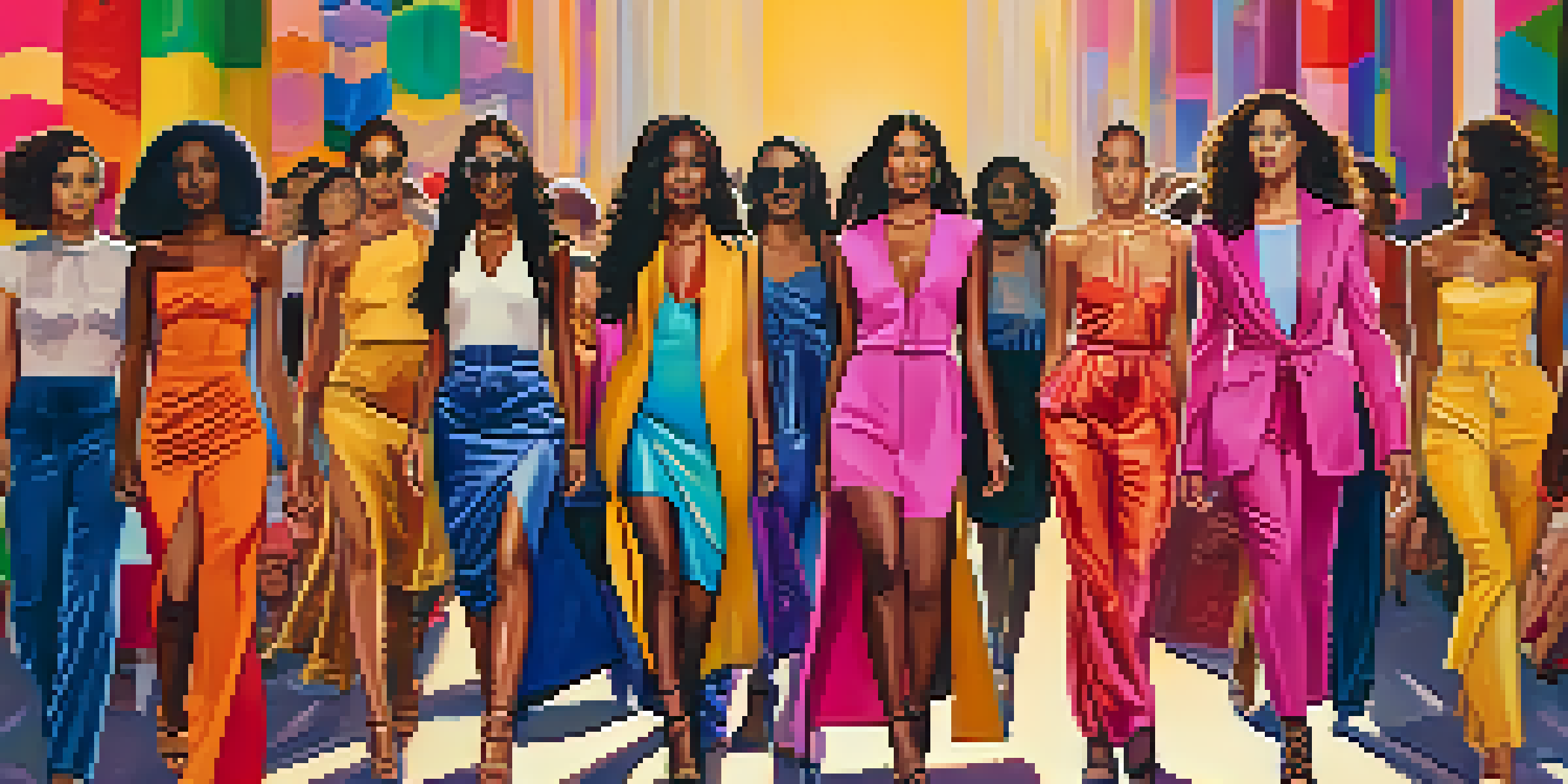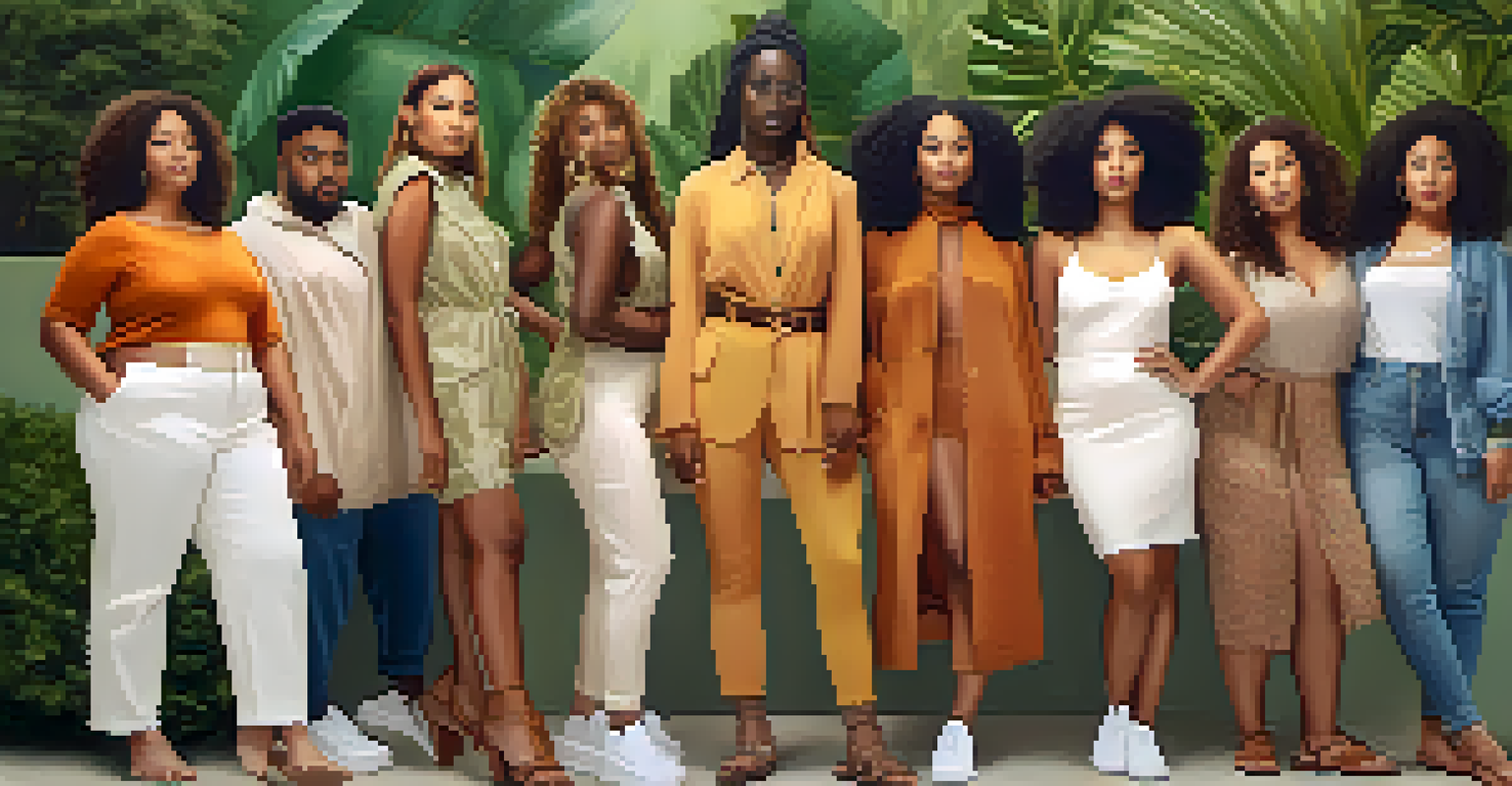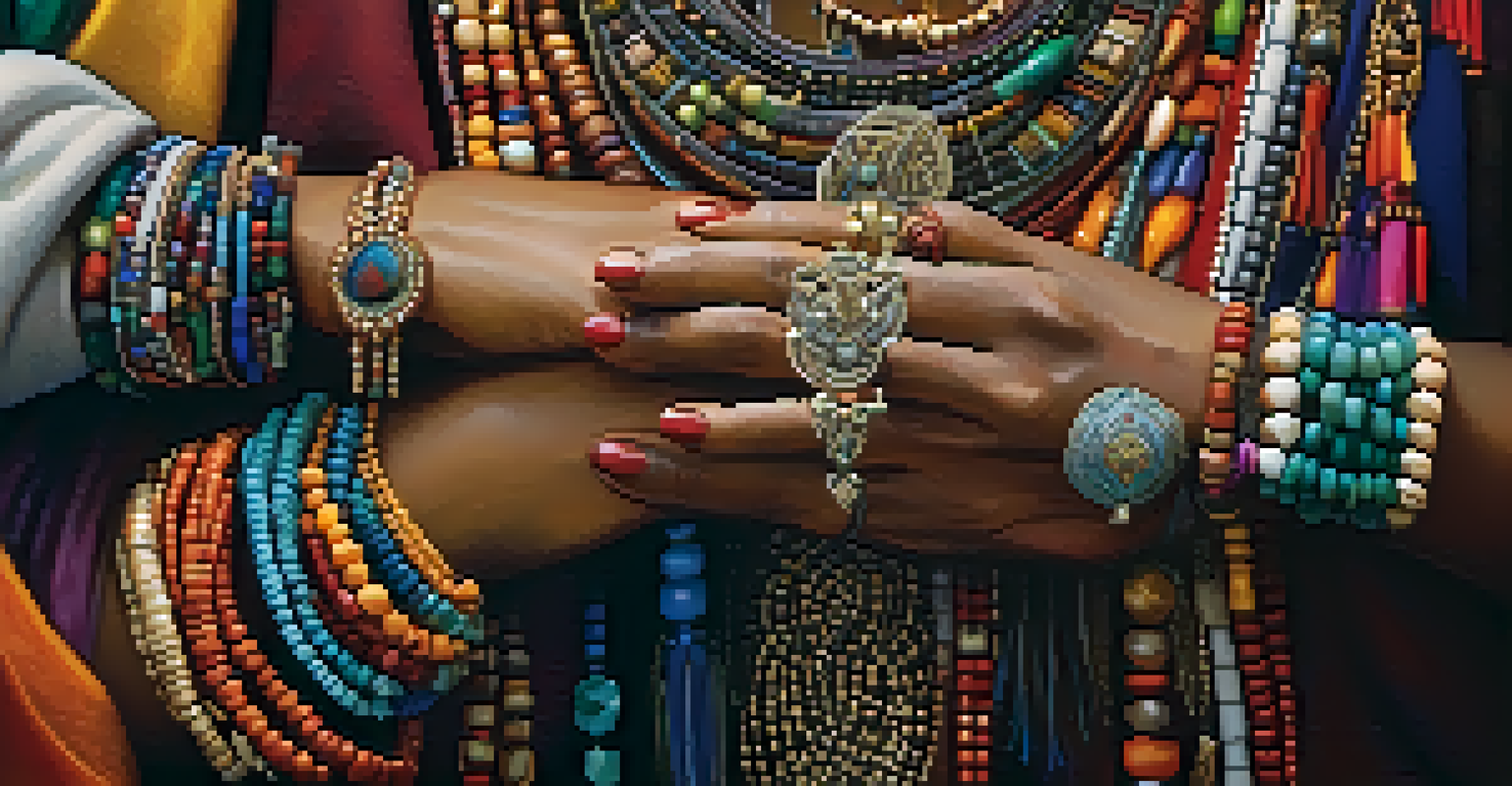Diversity in Fashion: Advocating for Inclusion Through Style

Understanding Diversity in the Fashion Industry
Diversity in fashion encompasses a range of identities, including race, gender, body size, and age. It's about recognizing that beauty comes in many forms and that everyone deserves representation. When we think about diversity in fashion, we must remember that it’s not just a trend but a necessary evolution.
Fashion is a language that creates itself in clothes to interpret reality.
Historically, the fashion industry has often celebrated a narrow standard of beauty, which leaves many feeling excluded. This lack of representation can have profound effects on self-image and societal norms. Acknowledging this gap is the first step toward creating a more inclusive industry.
As consumers increasingly demand authenticity and representation, brands are beginning to take notice. Embracing diversity not only makes ethical sense; it also resonates with a broader audience, leading to increased customer loyalty and brand trust.
The Role of Designers in Promoting Inclusion
Designers hold a powerful position in shaping how diversity is represented in fashion. By choosing to include models of different backgrounds, sizes, and ages in their campaigns, designers can challenge traditional beauty standards. This shift encourages consumers to embrace their own uniqueness and feel empowered in their choices.

Moreover, inclusive design practices can lead to innovative creations that cater to a wider audience. When designers consider diverse perspectives, they can produce clothing that not only looks good but also fits well and feels comfortable for everyone. This approach celebrates individuality while promoting a sense of belonging.
Diversity is Essential in Fashion
Diversity in fashion is not just a trend but a necessary evolution that recognizes beauty in all its forms.
As we see more designers advocating for inclusivity, it's essential to support those who are making a difference. By purchasing from brands that prioritize diversity, consumers can help foster a more equitable fashion landscape, inspiring others to follow suit.
The Impact of Social Media on Fashion Diversity
Social media has become a powerful platform for advocating diversity in fashion. Influencers and everyday users alike are sharing their unique styles, pushing back against the narrow definitions of beauty perpetuated by traditional media. This democratization of fashion allows for a broader range of voices to be heard.
Diversity is the one true thing we all have in common. Celebrate it every day.
Platforms like Instagram and TikTok enable users to showcase their fashion choices, regardless of body type or background. This visibility not only promotes acceptance but also creates a community where individuals feel validated in their self-expression. Social media serves as a catalyst for change, encouraging brands to rethink their strategies.
As followers engage with diverse content, they help shape the conversation around representation in the industry. The more we celebrate varied styles and stories, the more likely brands are to respond to this demand for inclusivity and authenticity.
Consumer Demand for Inclusive Fashion
Today's consumers are more conscious than ever about the brands they support. Many are actively seeking out companies that champion diversity, making it clear that inclusion is not just a nice-to-have but a must-have. This shift in consumer mindset is forcing brands to rethink their approach to marketing and product offerings.
Studies show that shoppers are willing to pay more for products from brands that promote social responsibility and inclusion. This trend highlights the financial benefits of embracing diversity—not just from a moral standpoint, but from a business perspective. Brands that ignore these demands risk losing relevance in a rapidly changing market.
Designers Drive Inclusive Change
Designers play a critical role in promoting inclusion by featuring models of diverse backgrounds and sizes, challenging traditional beauty standards.
By prioritizing inclusivity, brands can tap into a diverse customer base, fostering loyalty and increasing sales. This shift represents a significant opportunity for growth and innovation within the fashion industry.
Fashion Events and Diversity Initiatives
Fashion events have long been a stage for showcasing trends, but they are increasingly becoming platforms for diversity initiatives. Events like New York Fashion Week are now featuring more diverse models and designers, reflecting a broader range of cultures and identities. This evolution is a step toward normalizing diversity on the runway.
Additionally, many organizations are launching initiatives aimed at supporting underrepresented designers and models. These programs not only elevate new voices in the industry but also create pathways for future talent. By providing resources and visibility, the fashion community can help foster a more inclusive environment.
These events and initiatives serve as a reminder that fashion can be a force for good. When the industry comes together to advocate for diversity, it can inspire change and create a more equitable landscape for all.
Challenges Still Facing Diversity in Fashion
Despite the progress made, challenges remain in achieving true diversity in fashion. Many brands still adhere to outdated beauty standards or lack the commitment to change their practices. This resistance can hinder the movement toward inclusivity, making it essential for consumers and advocates to hold brands accountable.
Moreover, the intersectionality of identity adds complexity to the conversation about diversity. For instance, a brand may feature models of different races but still fall short in representing different body types or abilities. A holistic approach to diversity is crucial in ensuring that all voices are heard and valued.
Consumers Demand Inclusivity
Today's consumers actively seek out brands that prioritize diversity, demonstrating that inclusivity is essential for modern market relevance.
Addressing these challenges requires ongoing dialogue and collaboration among stakeholders in the fashion industry. By working together, we can create a more inclusive environment that celebrates all expressions of beauty.
The Future of Diversity in Fashion
Looking ahead, the future of diversity in fashion appears promising, though it requires continued effort and commitment. As more brands recognize the importance of inclusivity, we can expect to see a richer tapestry of styles and representations. The ongoing push for diversity is not just a phase; it's becoming a fundamental expectation.
Emerging designers are also leading the charge, often prioritizing inclusion from the ground up. These fresh voices are bringing innovative ideas and perspectives that challenge the status quo. Their influence is vital in shaping a fashion landscape that is more representative and equitable.

Ultimately, a diverse fashion industry benefits everyone—consumers, brands, and the creative community alike. By championing inclusion, we pave the way for a more vibrant and dynamic future in fashion, where everyone can find their place.